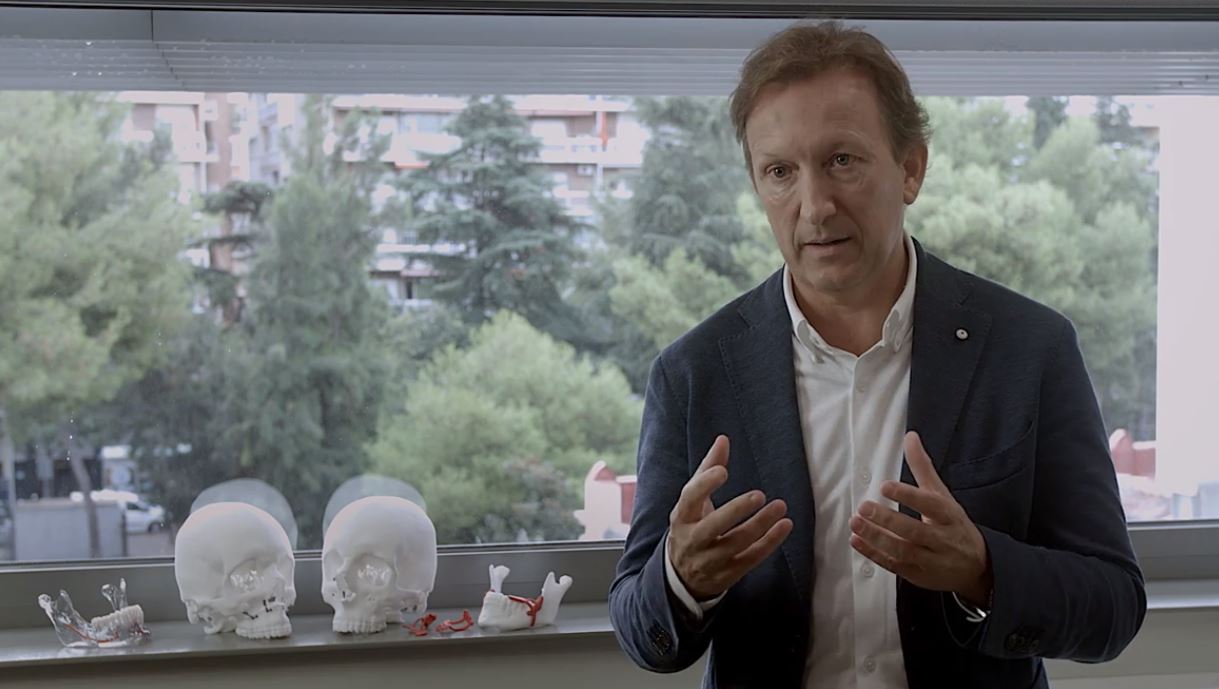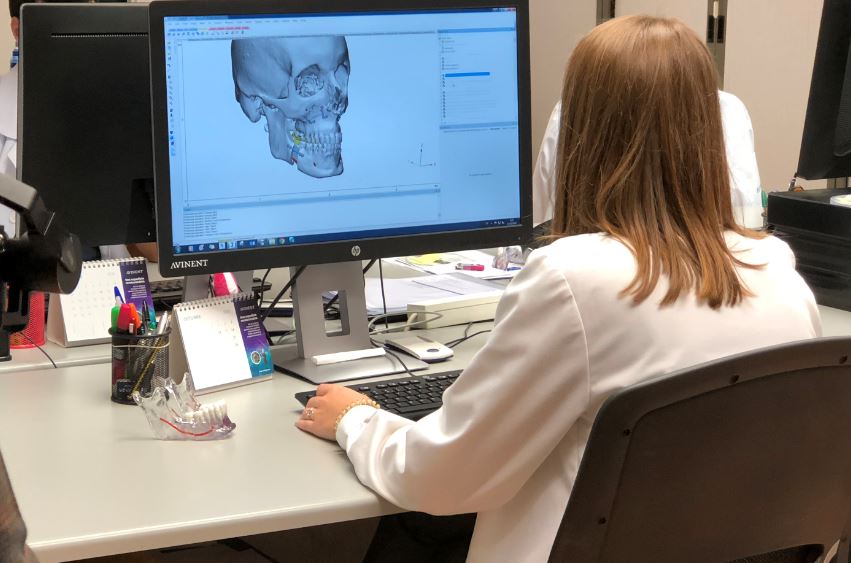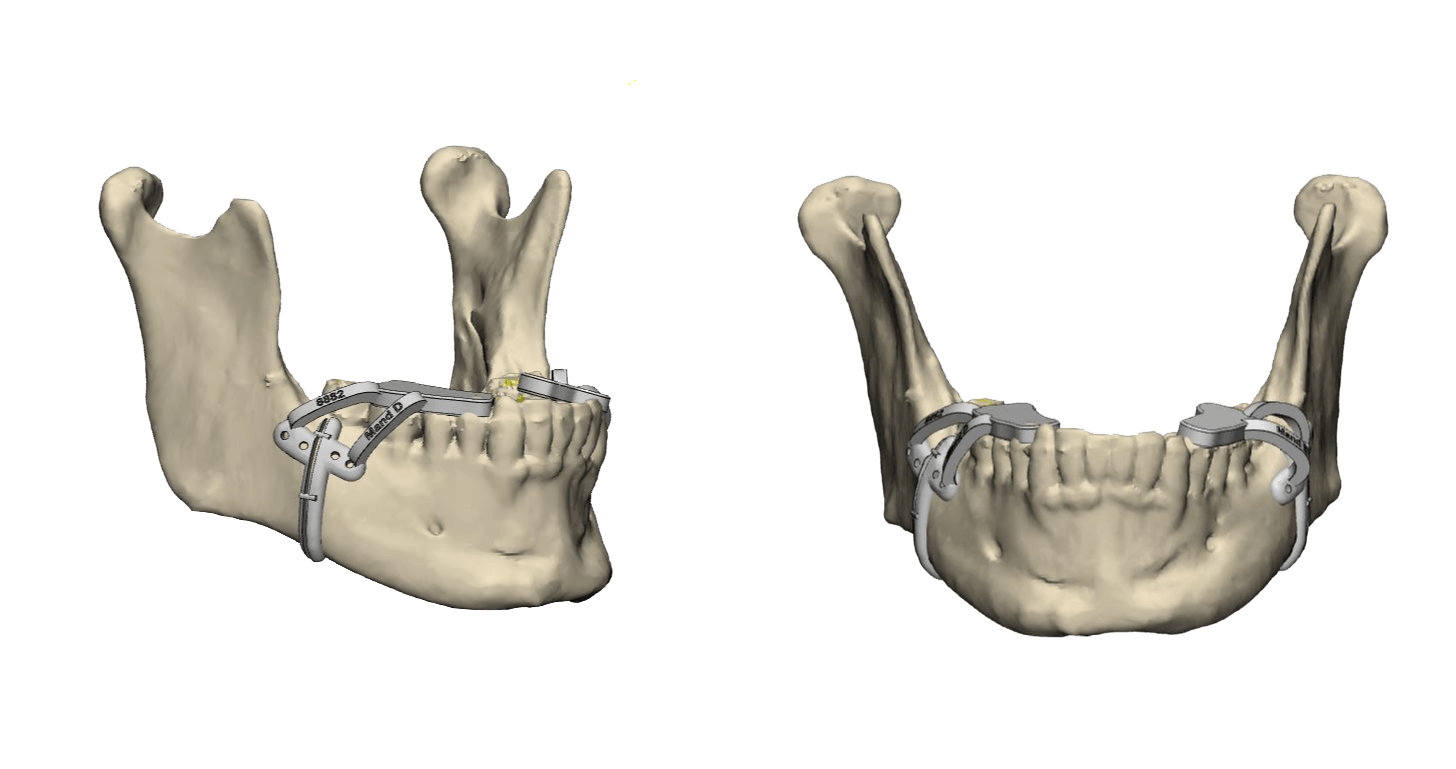

Before the arrival of 3D printing technology, we could already plan the patient in three dimensions, but what was missing was the ability to transfer all the information and accuracy available to us to the operating theatre
3D printing has revolutionised orthognathic surgery making it a fully personalised, or customised, process, completely adapting to the needs and particularities of the patient. At present, 3D printing technologies combined with the latest design software allow maxillofacial surgeons to precisely plan the surgery, have access to personalised implantable plates printed in biocompatible materials which will be implanted in the patient, as well as cutting guides and splints which will indicate the exact place to perform the osteotomy. Furthermore, these tools provide the medical professional with dentofacial skeleton models that are identical to those of the patient. These will firstly allow him to train for the operation, and secondly, act as a support in order to guide him/her during the surgery.
But let’s start at the beginning. Orthognathic surgery treats dentofacial deformities where the patient presents a bad bite due to prognathism, for example, or gingival smile, open bite, etc. Orthognathic surgery seeks to correct this dentofacial deformity with two very clear purposes. Firstly, it aims to obtain a functional result which will allow the patient to have a correct bite, and as a result resolve any possible problems with mastication, phonation, mandibular movements or the premature loss of teeth. Secondly, it seeks to resolve any possible aesthetic issues.

Context and background
Doctor Antoni Arcas, the renowned oral and maxillofacial surgeon from the Maxilodexeus clinic in Barcelona, is one of the medical professionals that has opted for a personalised orthognathic surgery and who has entrusted AVINENT DIGITAL HEALTH to provide him with the necessary solutions and products in a fully digital environment. Doctor Arcas explains in this article the evolution that has taken place in orthognathic surgery over the last decade and the revolution caused by the arrival of 3D printing and planning software in the medical sector: “Before the arrival of 3D printing technology, we could already plan the patient in three dimensions, but what was missing was the ability to transfer all the information and accuracy available to us to the operating theatre. This is what we have now obtained through customised surgery: personalised implantable dentures, cutting guides and splints and all printed in 3D, which allow us to also transfer all that accuracy to the surgery.”
 |
“Before the arrival of 3D printing technology, we could already plan the patient in three dimensions, but what was missing was the ability to transfer all the information and accuracy available to us to the operating theatre” Dr. Antoni Arcas |
The process
And how is personalised orthognathic surgery performed? What steps must the surgeon follow? As Doctor Arcas describes, in this type of surgery “planning is very important.” This planning begins with an examination of the patient, which includes understanding their reservations and their expectations with regard to the operation. Doctor Arcas states that “the patient in general will have an initial pre-op orthodontic phase and when this is concluded the pre-op planning will be carried out.”
 Planning
Planning
Doctor Antoni Arcas explains that pre-op planning is based on “the three dimensions. We carry out a 3D CT scan of their entire dentofacial skeleton and, using this as a basis, with the new and sophisticated software, we are able to move the maxilla and the mandible to exactly where we need them to obtain a good functional and aesthetic result.”


With this first phase of the planning already done, now, with the arrival and increased use of 3D printing technology in the healthcare field, “we can transmit and perfectly replicate all this information in the surgery, because we are going to manufacture a cutting guide for each patient, which will tell us exactly where we have to carry out the osteotomy. The very same cutting guide is going to show us where to exactly position the implantable dentures, which are also printed in 3D and customisable,” states Doctor Arcas.
 Surgery
Surgery
As such, during the surgery the surgeon will be able to make a cut exactly as indicated by the surgical cutting guides printed in 3D in order to mobilise the mandible. These guidelines allow the mandibular nerve to be protected and also indicate where the personalised implantable dentures will be placed. Splints are used for the correct positioning of the cutting guide during the osteotomy. The models printed in 3D are used to know exactly how to place the dentures quickly and safely.
Benefits for the patient and the surgeon
Customised orthognathic surgeries have a series of benefits for both patients and surgeons.
As Doctor Arcas highlights, it provides for a “safe and less invasive surgery, given that thanks to the splints and surgical cutting guides, the professional knows exactly where to cut and the mandibular nerve is completely protected.” The same is true for upper maxilla surgery, where the surgical guidelines indicate “exactly where to perform the osteotomy.” Furthermore, the implantable dentures printed in biocompatible materials “are perfectly implanted into the skeletal structure of the patient thanks to the fact that they are personalised” and the cutting guides are used to ensure they are placed exactly in the previously selected spot.
 |
“It is a safe and less invasive surgery, given that thanks to the splints and surgical cutting guides, the professional knows exactly where to cut and the mandibular nerve is completely protected.” Dr. Antoni Arcas |
This more precise and less invasive surgery has a direct effect on the patient’s post-op recovery, which Doctor Arcas describes as “shorter and with a much faster recovery than with traditional surgery given that there is less inflammation and immediate function.”
All of this precision is also reflected in the final result, which is much more exact and ensures both functionality as well as the desired aesthetic aspect.
The surgeon also reaps the benefits. Doctor Antoni Arcas assures that “it is a pleasure to work in this manner, because you can offer a safe surgery, you do not have to suffer, you know exactly what you are going to place and where, you do not have to perform complicated operations and at the same time, something which is very important is that the operating time decreases, and the shorter the operating time, the better it is for the patient and for the surgeon. In other words, it is a much safer surgery, less invasive and with excellent results, both aesthetically as well as for the post-op recovery.